Having a good product is nice.
A unique product is better.
A good product that’s also unique is like winning the lottery.
Amazing things happen.
They might as well stick an “S” on your chest.
Today, I’m going to touch on a topic I have a soft spot for – product differentiation.
Product differentiation (coupled with solid branding) is why people choose Levi jeans over the jeans you can get at Walmart.
Sure, they do the same thing but it’s a different product entirely.
In this article, you’ll learn about product differentiation, the different types, and methods you can use to implement it in your business.
What is product differentiation?
Product differentiation is a process used in marketing that identifies and communicates the unique value a product or brand brings to the table when compared to competitors.
This is not to be confused with a value proposition which communicates your overarching promise.
Beardbrand positions its products with a specific product ethos.
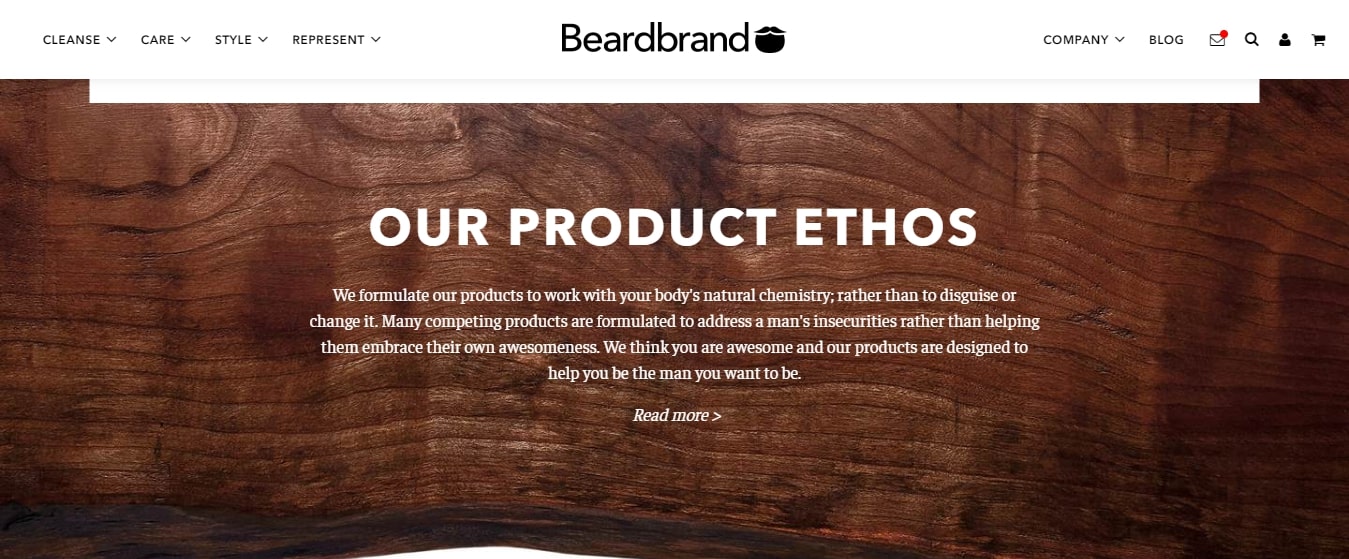
It mentions its philosophy as well as the difference between Beardbrand and similar competitors. It resonates with a certain group of people who then become devoted customers.
Diving into the realm of visual branding, Canva t-shirt design emerges as a game-changer for entrepreneurs and creatives alike. This intuitive platform revolutionizes the way businesses approach product differentiation, offering a treasure trove of customizable templates and tools that breathe life into unique concepts.
As brands jostle for attention in a crowded marketplace, the ability to craft eye-catching apparel becomes a powerful asset, setting the stage for memorable customer experiences.
When product differentiation is done properly, it becomes a competitive advantage for you. You’re then able to foster brand loyalty and even charge more.
That’s why Rolex can charge a few thousand dollars for a watch and other brands are stuck fighting over $100 sales.
Advantages of product differentiation
It’s nice to have a differentiated product.
It gives you the ability to say “we’re the only ones that do x.”
More than being fun, it has a positive business impact. If you’re able to tap into and take advantage of those factors then you’ll increase revenue many times over.
It prevents you from being another faceless product in the sea of choice.

Increased value to customers
Product differentiation can focus on many factors your customers find important. When your differentiation strategy focuses on the value you deliver such as durability or long term cost savings, it increases the perceived value among customers and potential customers.
You can focus on the initial selling price and why it’s a bit more expensive than what’s on the market, added enhancements, or even lifecycle benefits.
For example, solar panel installation is expensive but in the long run, you’ll save money. Since consumers are saving money, they’re more willing to pay a higher amount on the front end.
No longer compete on price
This is one of the most important advantages of product differentiation. You no longer have to compete in a race to the bottom with similar brands.
For example, a shoe company can differentiate its shoes from other brands in terms of use case and durability. Jordan’s are a great example. It has developed a cult-like following over the years through superior craftsmanship, specialty uses, and limited edition releases.
The shoes below retailed for over $100 in 2008. I know because I happily bought a pair when they first came out.
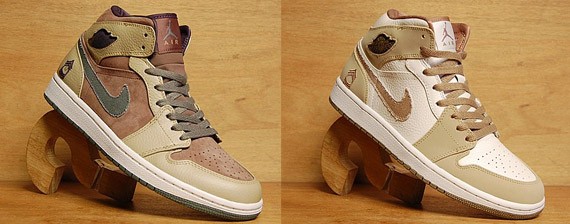
Better brand recall and loyalty
Since you’re delivering value to customers instead of competing on price, the ones who choose you the first time are more likely to continue choosing you. That’s because it was a conscious decision to buy a more expensive product that provided more value.
They remember you and come back time and again.
The only prerequisite is that you maintain the initial quality they received. When you find yourself in a competitive market, any slip in quality may result in lost customers.
For example, if you’ve made a reputation for yourself as a company that delivers superior underwear in terms of fit, feel, and materials then people come to know you for that. If the quality slips, they’ll find a company that meets or exceeds the quality they’re used to.
No substitute
When your product differentiation strategy focuses on design or build quality then there is no real substitute for what you offer. At least, that’s the perception in your customer’s mind.
Yes, there may be other well-designed products but none are quite like yours. For example, Apple phones and computers have a unique design. It’s believed that no other company has such a recognizable signature look and feel.
Apple also did a good job of making consumers feel like the computer itself is superior (it is in some ways but falls flat in other areas). That’s why this computer starts at $1,300.
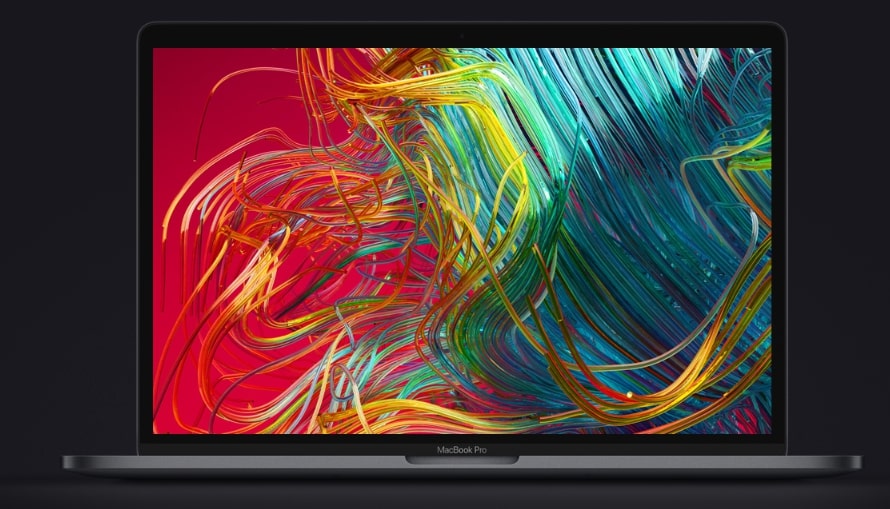
Types of product differentiation
There are three major types of product differentiation you can use as part of your strategy. The one you choose depends on your product and how well your consumers understand it.
For example, it would be much easier to understand product differentiation between jeans than enterprise analytics software.
Vertical product differentiation
This is when consumers are able to look at two differentiated products and compare them on a single factor. With this type of product, consumers are clear on the quality because it’s a well-defined product category.
For example, consumers are clear on the quality of shoes, clothes, and certain electronics. These would be vertically differentiated.
When a customer encounters two similar products they can compare them and say “Product A is better than Product B.”
In the fashion industry, there are countless types of shoes, shirts, and any other apparel you can think of. There are also countless price points which are set based on countless differentiation factors. With that being said, a customer can easily say Gucci is better than Toms, but the conclusion is subjective.
Similarly, Custom Dri Fit Polo Shirts offer a unique blend of comfort and style, appealing to customers who prioritize performance and quality in their apparel choices.
The Gucci brand is an obvious example of the right and winning example of a differentiated product. Consumers are willing to pay huge sums just to buy an ordinary T-shirt. Very often, this very fact distinguishes the luxury segment of goods from the mass market.
This white t-shirt costs a few dollars:
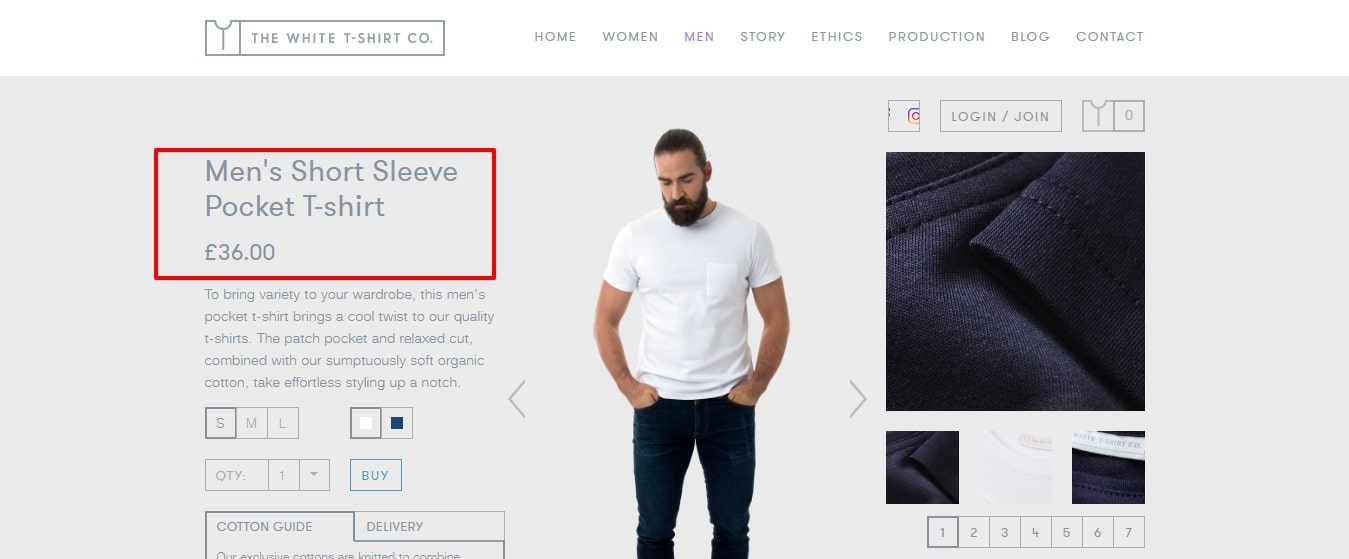
This one costs a couple hundred dollars:
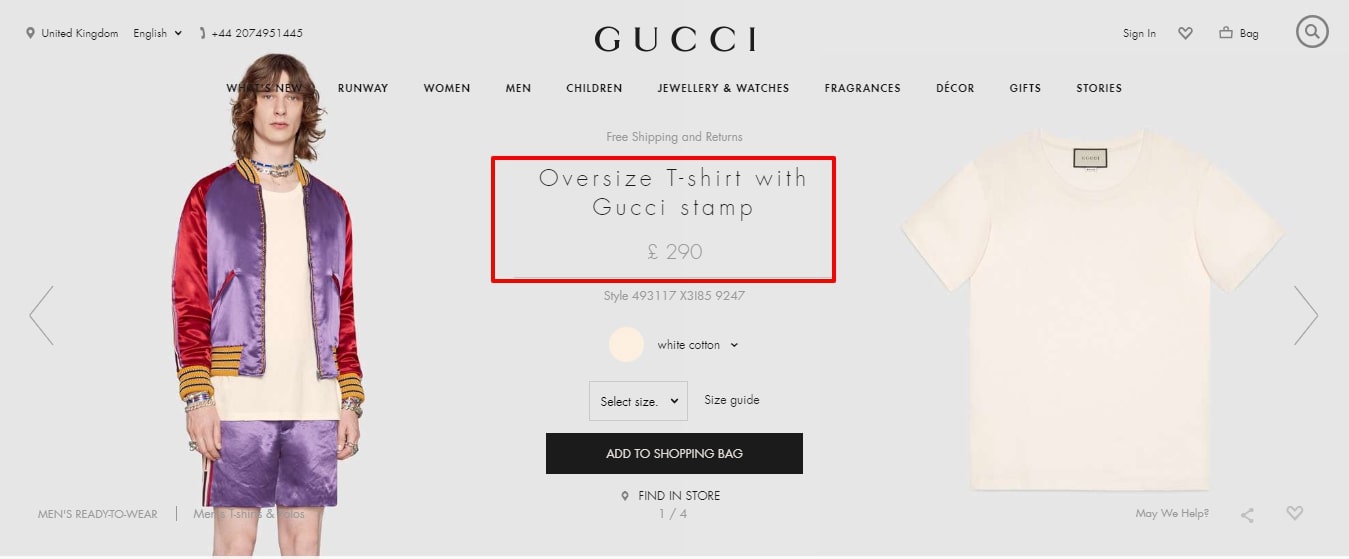
Why?
Vertical product differentiation.
Vertical product differentiation is for products that can be classed as low quality or high quality by the average consumer. If you were to start your own t-shirt business, it would be important to understand the perception of your product in the eye of consumers and position it accordingly.
Horizontal product differentiation
This type of differentiation happens when the product is harder to classify because it’s comprised of many features. Due to the complexity of the product, one or two characteristics are chosen as a way to compare and differentiate.
Consumers aren’t 100% sure about the quality of different products in the category.
For example, two foreign dishes served at a restaurant. There are many features that make the dish such as presentation, texture, ingredients, etc. but the consumer will likely focus on overall taste when making a decision. Even though they make a clear choice, they can’t say which dish is superior.
Horizontal differentiation is for products that can’t be classed as high quality and low quality to the average consumer.
Simple/mixed differentiation
As the name implies, this type of differentiation takes elements from both vertical and horizontal differentiation.
This happens when consumers are looking at more complicated products. An example would be software. There are countless features bundled up in software and a consumer will look at the core features and a few additional features when making their choice.
Vertical differentiation may occur in the main features but horizontal differentiation occurs with the less important features.
Implementing an on premise PIM (Product Information Management) system can be a powerful product differentiation strategy, allowing businesses to maintain control and security over their critical product data while streamlining information management processes.
Let’s face it – having a solid handle on your product information can be a game-changer. Companies that get their PIM strategy right aren’t just pushing data around – they’re actually connecting with customers in ways their competition hasn’t figured out yet. The cool thing about today’s PIM tools is how flexible they are – you can showcase your products differently on your website versus your mobile app, all while keeping your core message intact.
Methods of product differentiation
Product differences are usually minor. At their core, products in one category are the same.
That means the differences between one product and another don’t have to be physical characteristics or true features. It could be the product packaging, the way it’s advertised, who it’s pitched to, etc.
This section focuses on the ways you can implement product differentiation.
Quality
This is what most people think of when they hear the term product differentiation. It’s a tried and tested path to setting your products apart from the competition.
Quality allows you to charge a higher price point and attract better customers. At the same time, that quality needs to remain consistent or improve over time to keep customers happy.
Customer attracted to quality tend to be more discerning and are willing to pay a premium.
Customer service
You can almost never go wrong if you deliver superior customer service. You can sell a product that’s the same quality as your competitors but people will continue to choose you because of great service delivery.
One of the best examples of this is Zappos. It’s a shoe retailer with a generous shipping and returns policy. It also holds the record for one of the longest customer service calls ever made.
It’s not a marketing gimmick, Zappos has interwoven customer service into the fabric of its organization and was bought by Amazon for just under $1 billion because of it.
The trend of customer support has been improving with the advancement of technology. Now, in addition to easy access to support and solving their issues, industries are concerned about customer engagement. This is where advanced customer support technologies, like flexible inbound call centers, can help you deliver remarkable support and drive great results.
Additionally, integrating an IT help desk into your customer service strategy ensures that technical issues are addressed promptly, leading to a smoother customer experience. This addition can significantly boost customer satisfaction and loyalty.
Price
I’m not a fan of competing on price if it’s a race to the bottom. Penetration pricing can trigger a price war where everyone loses.
The companies involved in the price war lose.
The consumers lose because brands may go out of business when they can’t compete.
Instead, choose a premium price point. You’ll attract better customers and have to sell fewer products to achieve the same revenue. In addition to that, you’ll keep more of the profits.
Design
It took a while but companies have finally woken up to the power of design in products and services. McKinsey found that companies which embraced design and made it part of their product strategy increased revenue nearly 2x as fast as companies who ignored design.
Design doesn’t mean your product needs to be elaborate. It can mean it works intuitively, is pleasant to look at, or evokes certain emotions.
Take these two images as an example:

That is not how a vase usually looks.
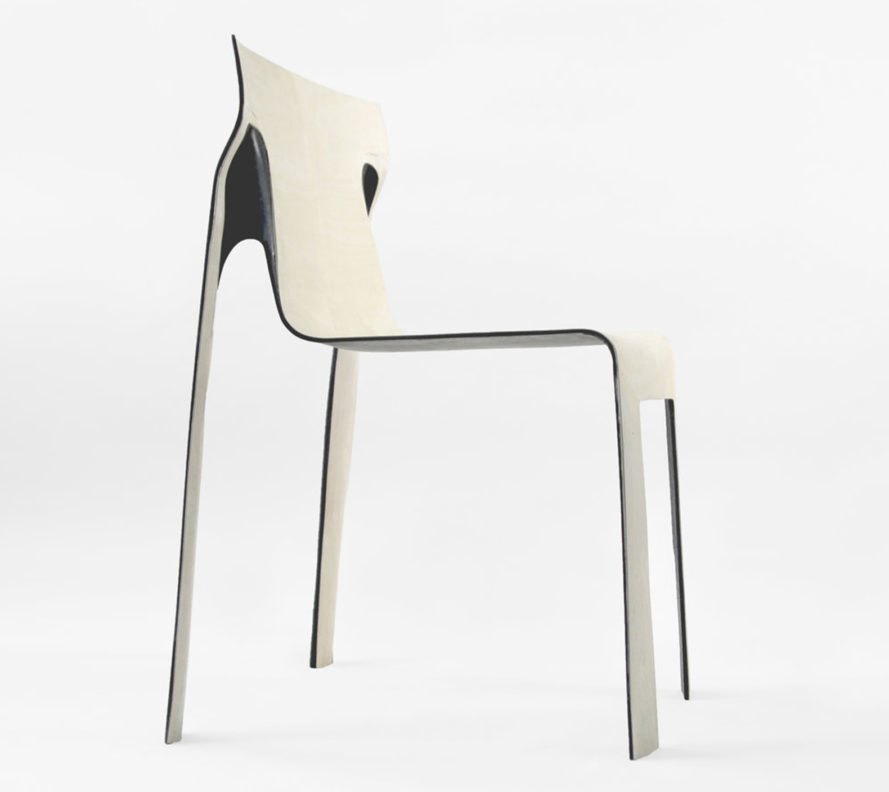
This is not how a chair is supposed to look.
Because of the novel design, it’s differentiated from any other product on the market and will attract a lot of interest (and possibly sales).
There are countless examples of design playing a prominent role in product differentiation.
Another one that comes to mind is Juicero. Though the company eventually closed its doors for other reasons, it had a great product design. People paid $400 a pop for this juicer.
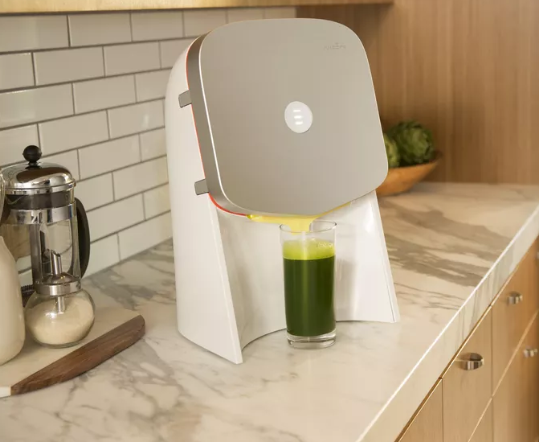
Benefits
What is the Promised Land your product gets people to?
At KyLeads, we help you understand your audience, generate leads, and segment those leads. All this is so you can send better messages that compel people to buy.
Louis Vuitton helps you get fly and lends you a certain amount of status. BMW is a luxury car brand that helps you get from Point A to Point B while projecting wealth and prestige.
What benefits do your products give your customers? What problems do you solve? Show the value you bring to the table over competitors.
Distribution channels
Where you spread your message (or don’t spread it) can also be an effective product differentiation strategy. For example, if you’re a luxury resort, you may advertise in specific magazines and ignore others entirely.
Some companies advertise strictly on adult websites while others wouldn’t be caught dead there. Some companies can only reach their target market through newspapers so they ignore YouTube, Facebook, Google Ads, etc.
Choose your distribution channels based on the image you want to portray and where you’ll find your customers.
Conclusion
Product differentiation is essential if you want to stand out in a crowded market.
It has many benefits and, when used right, will allow you to command a premium price point, build brand loyalty, and ensure you’re attracting the right customers.
Choose the type of product differentiation you’ll use then focus on one of the methods mentioned in the article. When you start to see success, layer other methods on until you’re truly unique in your market.
Let me know what you think about product differentiation in the comments and don’t forget to share.